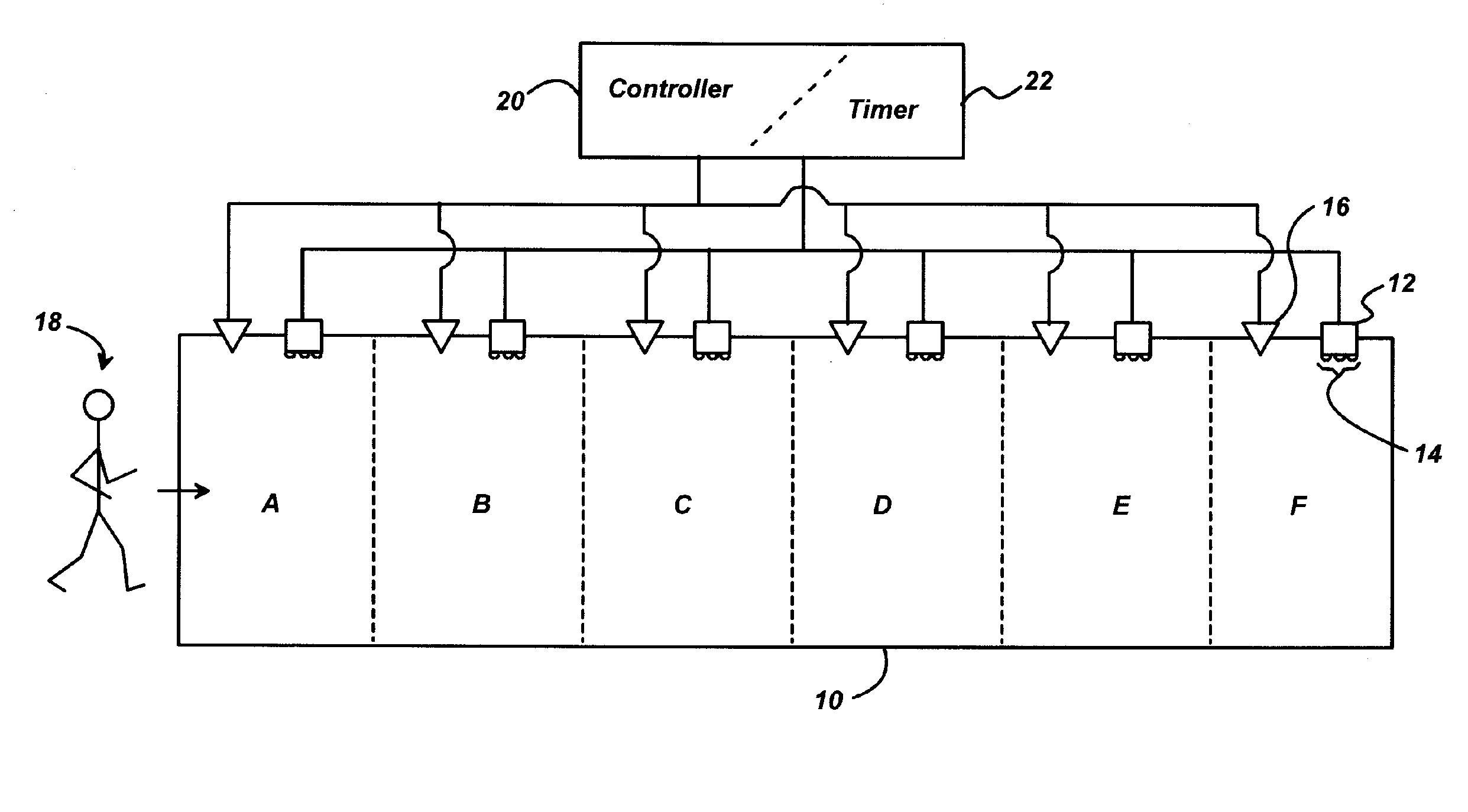Method and system for controlling lighting
- Summary
- Abstract
- Description
- Claims
- Application Information
AI Technical Summary
Benefits of technology
Problems solved by technology
Method used
Image
Examples
Embodiment Construction
[0026] The present invention is an occupancy / activity sensing method and system that exploits the controllability of solid-state lighting to provide an adaptable lighting environment that will be acceptable to users. Preferably, the method and system act to change the quality of the lighting (e.g., lower CRI and / or a different CCT) in a space when a change in the occupancy level or activity is sensed. This is preferably accomplished without substantially changing the level of illumination in the space. A substantial change in the illumination level would be a change that could be perceived by the normal occupant of the space. The lower quality of lighting is achieved at a lower electrical power level thereby providing energy savings without necessarily sacrificing the level of illumination.
[0027] As used herein, the occupancy level is simply the number of persons within the space and preferably is defined by two states, occupied and not occupied. An activity may include, but is not...
PUM
 Login to View More
Login to View More Abstract
Description
Claims
Application Information
 Login to View More
Login to View More - R&D
- Intellectual Property
- Life Sciences
- Materials
- Tech Scout
- Unparalleled Data Quality
- Higher Quality Content
- 60% Fewer Hallucinations
Browse by: Latest US Patents, China's latest patents, Technical Efficacy Thesaurus, Application Domain, Technology Topic, Popular Technical Reports.
© 2025 PatSnap. All rights reserved.Legal|Privacy policy|Modern Slavery Act Transparency Statement|Sitemap|About US| Contact US: help@patsnap.com


